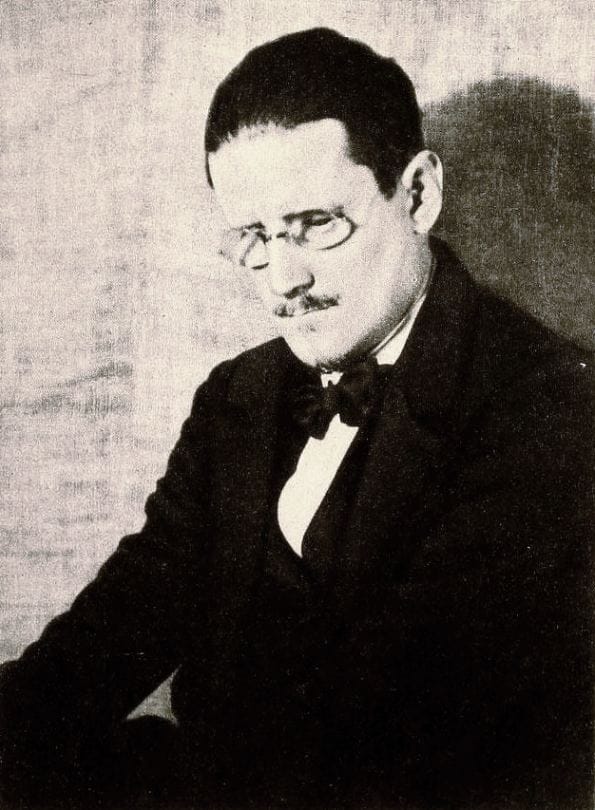James Joyce, one of the most significant writers of the 20th century, remains a towering figure in the landscape of modern literature. His works, marked by innovative narrative techniques and a deep exploration of the human condition, have left an indelible mark on the literary world. From his early life in Dublin to his revolutionary novels, Joyce’s legacy is characterized by a quest for identity and a profound engagement with the complexities of life. This blog post delves into the various aspects of James Joyce’s life and work, showcasing how his contributions continue to influence writers and readers alike.
Early Life and Influences in Dublin
James Joyce was born on February 2, 1882, in the heart of Dublin, a city that profoundly shaped his literary imagination. Growing up in a middle-class family, Joyce experienced financial instability and a tumultuous home environment, which left a lasting impact on his worldview. His early education at Clongowes Wood College and later at University College Dublin fostered his intellectual growth and honed his literary sensibilities. Dublin itself, with its vibrant streets, rich culture, and complex social dynamics, served as an endless source of inspiration for Joyce. The city’s atmosphere, marked by a blend of tradition and modernity, deeply influenced his writing. He was particularly captivated by the local dialects, the rhythm of everyday conversations, and the intricate web of relationships among its inhabitants. These elements became integral to his storytelling, lending authenticity and depth to his characters and settings. Joyce’s engagement with the socio-political issues of Ireland, including themes of identity, nationalism, and spirituality, further enriched his narratives. His keen observations of the human condition, coupled with his personal experiences, allowed him to craft stories that resonated with both the particularities of Dublin life and the universal aspects of human existence. In works like “Dubliners,” Joyce transformed the city from a mere backdrop into a living, breathing entity, integral to the lives of his characters. His early life in Dublin laid the groundwork for his literary explorations, providing the raw material from which he would draw for his most significant works. Through his writings, Joyce immortalized the essence of Dublin, capturing its complexities and contradictions in a way that continues to fascinate readers worldwide.
The Transition from Poetry to Prose Writing
James Joyce’s initial foray into the literary world was through poetry, a medium that allowed him to explore his early artistic inclinations. His first collection, “Chamber Music,” published in 1907, reflects his sensitivity to rhythm and sound, showcasing a lyrical quality that would later influence his prose. However, as Joyce’s literary ambitions grew, so did his desire to tackle more complex themes and narratives, prompting a shift from poetry to prose. This transition was a natural progression for Joyce, who sought a medium that could better capture the multifaceted nature of human experience. Prose offered him the flexibility to delve deeper into characters’ psyches and the intricacies of their social environments. Joyce’s early stories, particularly those in “Dubliners,” served as a crucial stepping stone in this evolution. These stories allowed him to experiment with narrative form and style, laying the groundwork for his later, more ambitious novels. Joyce’s prose is distinguished by its innovative use of language and narrative structure. His move away from the constraints of poetic form enabled him to develop a more nuanced and expansive storytelling approach. This shift is evident in his use of stream-of-consciousness techniques, interior monologue, and intricate character development. These elements would become defining features of his later works, such as “A Portrait of the Artist as a Young Man” and “Ulysses.” Ultimately, Joyce’s transition from poetry to prose was driven by his quest to explore the depths of human consciousness and societal dynamics. Through prose, he found a medium that could fully accommodate his expansive vision, allowing him to break new ground in the realm of modern literature.
The Publication and Impact of “Dubliners”
The publication of “Dubliners” in 1914 was a turning point in James Joyce’s literary career. This collection of fifteen short stories delves deeply into the lives of Dublin’s inhabitants, offering a nuanced portrayal of the city’s social fabric. Each story captures moments of insight and epiphany, providing readers with a profound understanding of the characters’ inner worlds. “Dubliners” stood out for its realism and unflinching examination of life’s complexities. Joyce’s meticulous attention to detail and his ability to render the ordinary extraordinary distinguished his work from his contemporaries. The stories tackle themes such as paralysis, disillusionment, and identity, reflecting the socio-political landscape of early 20th-century Dublin. The collection also showcased Joyce’s evolving narrative techniques, including the use of stream-of-consciousness and free indirect discourse. These methods allowed readers to experience the characters’ thoughts and emotions intimately, setting the stage for the more experimental styles he would employ in later works like “Ulysses.” Joyce’s portrayal of Dublin in “Dubliners” transformed the city into a vivid, almost character-like presence within his stories. The interconnectedness of the stories provides a cohesive portrait of a society in flux, grappling with issues of modernity and tradition. This collection resonated deeply with readers, offering a mirror to their own experiences and struggles. Despite initial publication challenges due to its candid content, “Dubliners” eventually garnered critical acclaim, cementing Joyce’s reputation as a pioneering modernist writer. The collection’s impact extended beyond its immediate reception, influencing future generations of writers and contributing significantly to the development of 20th-century literature.
“A Portrait of the Artist as a Young Man” – A Semi-Autobiographical Masterpiece
“A Portrait of the Artist as a Young Man,” published in 1916, marks a critical juncture in James Joyce’s career, offering readers an intimate glimpse into his own journey toward self-discovery through the lens of his alter ego, Stephen Dedalus. This novel skillfully navigates themes of individuality, rebellion, and the relentless pursuit of artistic integrity. The innovative structure and style, characterized by a stream-of-consciousness technique, immerse readers in Stephen’s evolving consciousness, capturing the inner turmoil and epiphanies that shape his identity. Joyce meticulously details Stephen’s internal conflicts as he grapples with the rigid expectations of family, religion, and nation. The narrative’s fluidity mirrors the protagonist’s shifting perceptions and growing awareness, providing a profound commentary on the complexities of adolescence and the quest for authenticity. Stephen’s struggles with faith and artistic expression reflect Joyce’s own experiences, making the novel a deeply personal and resonant work. In “A Portrait of the Artist as a Young Man,” Joyce also begins to employ narrative techniques that he would later refine in “Ulysses.” The use of free indirect discourse and varying narrative perspectives allows readers to delve deeply into Stephen’s psyche, offering an immersive experience that blurs the boundaries between character and reader. This stylistic experimentation underscores Joyce’s innovative approach to storytelling, solidifying his reputation as a pioneer of modernist literature.
The Revolutionary Techniques of “Ulysses”
“Ulysses,” published in 1922, stands as a monumental achievement in literary history, celebrated for its groundbreaking approach to narrative and form. This novel reimagines the epic journey of Homer’s “Odyssey” within the confines of a single day in Dublin, June 16, 1904, following the interconnected lives of Leopold Bloom, Stephen Dedalus, and Molly Bloom. Joyce’s intricate and layered narrative technique transforms the mundane details of everyday life into a rich tapestry of human experience. One of the most striking aspects of “Ulysses” is Joyce’s masterful use of stream-of-consciousness. This technique allows readers to immerse themselves in the characters’ internal dialogues, presenting thoughts and sensations in real time. By capturing the fragmented and nonlinear nature of human thought, Joyce provides an unprecedented depth of psychological insight. This method not only enhances character development but also challenges readers to engage more actively with the text. Joyce also employs a variety of stylistic experiments throughout “Ulysses,” each chapter adopting a different narrative technique or linguistic style. From the parodic and playful tone of “The Oxen of the Sun” to the newspaper-like structure of “Aeolus,” Joyce’s versatility in manipulating language and form is on full display. These shifts not only keep the narrative dynamic and engaging but also serve to mirror the multifaceted nature of human experience. Another notable innovation in “Ulysses” is Joyce’s use of interior monologue, which further blurs the line between narrator and character. This technique allows the reader intimate access to the characters’ thoughts, emotions, and sensory perceptions, creating a vivid and immersive reading experience. Through these revolutionary methods, Joyce invites readers to explore the depths of his characters’ minds, offering a profound commentary on the human condition. Joyce’s playful engagement with language extends to his use of puns, allusions, and multilingual references, enriching the text with layers of meaning. This linguistic complexity demands an active and attentive readership, turning the act of reading into a collaborative exploration of meaning.
The Complexity and Innovation of “Finnegans Wake”
“Finnegans Wake,” published in 1939, stands as James Joyce’s most complex and experimental work, encapsulating his fascination with the fluidity of language and the cyclical nature of history. This novel is a linguistic labyrinth, a dream-like narrative that defies conventional reading with its dense, multi-layered text. Joyce constructs a story that mirrors the subconscious mind, rich with puns, portmanteaus, and multilingual references that challenge readers to decipher its myriad meanings. At the heart of “Finnegans Wake” is its non-linear structure, which eschews traditional plot development in favor of a circular form that reflects the book’s thematic preoccupation with cycles of rise and fall, life and death, and creation and destruction. This circularity is not just thematic but structural, as the novel famously begins mid-sentence, continuing from the book’s end, creating an infinite loop. Joyce’s use of language in “Finnegans Wake” is revolutionary. He blends words from multiple languages, creating a unique lexicon that requires readers to engage with the text on an intuitive level. This approach transforms reading into an active process of interpretation and discovery. Each sentence can be unpacked for its phonetic play, cultural references, and layered meanings, inviting endless analysis and interpretation. Furthermore, Joyce employs a dream-logic that blurs the boundaries between characters, times, and places, allowing the narrative to flow in a stream of associations. This technique mirrors the workings of the unconscious mind, making the novel a textual representation of a dreamscape. Joyce’s innovative narrative style in “Finnegans Wake” has not only expanded the possibilities of literary expression but has also challenged readers to rethink the act of reading itself.
James Joyce’s Enduring Influence on Modern Literature
James Joyce’s impact on modern literature extends far beyond his own prolific body of work. His groundbreaking narrative techniques and deep psychological insights have left an indelible mark on the literary world, influencing a wide array of writers and genres. Joyce’s experimental style, particularly his use of stream-of-consciousness and interior monologue, has inspired authors to push the boundaries of traditional storytelling, encouraging them to explore the intricacies of human thought and experience in novel ways. Joyce’s fearless approach to language and form has been particularly influential among modernist and postmodernist writers. Virginia Woolf, for instance, was notably inspired by Joyce’s methods, incorporating similar techniques into her own work to delve into her characters’ inner lives. Samuel Beckett, who studied Joyce’s work extensively, adopted and adapted many of his mentor’s innovations in his own writing, contributing to the evolution of the modernist movement. Moreover, Joyce’s focus on the everyday lives of ordinary people has had a lasting impact on contemporary literature. His ability to find profound meaning in mundane experiences has paved the way for writers to explore the depths of the human condition in seemingly simple narratives. This emphasis on the ordinary as a source of literary richness continues to resonate with authors who seek to capture the complexities of real life. In addition to his stylistic and thematic contributions, Joyce’s works have inspired critical discourse and scholarly analysis, contributing significantly to literary theory. His texts are frequently cited in discussions of modernist literature, narrative theory, and the exploration of consciousness in fiction. Joyce’s inventive use of language and form invites readers and scholars alike to continually reinterpret and rediscover his works, ensuring that his influence remains vibrant and relevant. In summary, James Joyce’s innovative techniques and profound thematic explorations have profoundly shaped modern literature. His legacy lives on through the countless writers and readers who continue to draw inspiration from his extraordinary body of work, ensuring his enduring place in the literary canon.
















